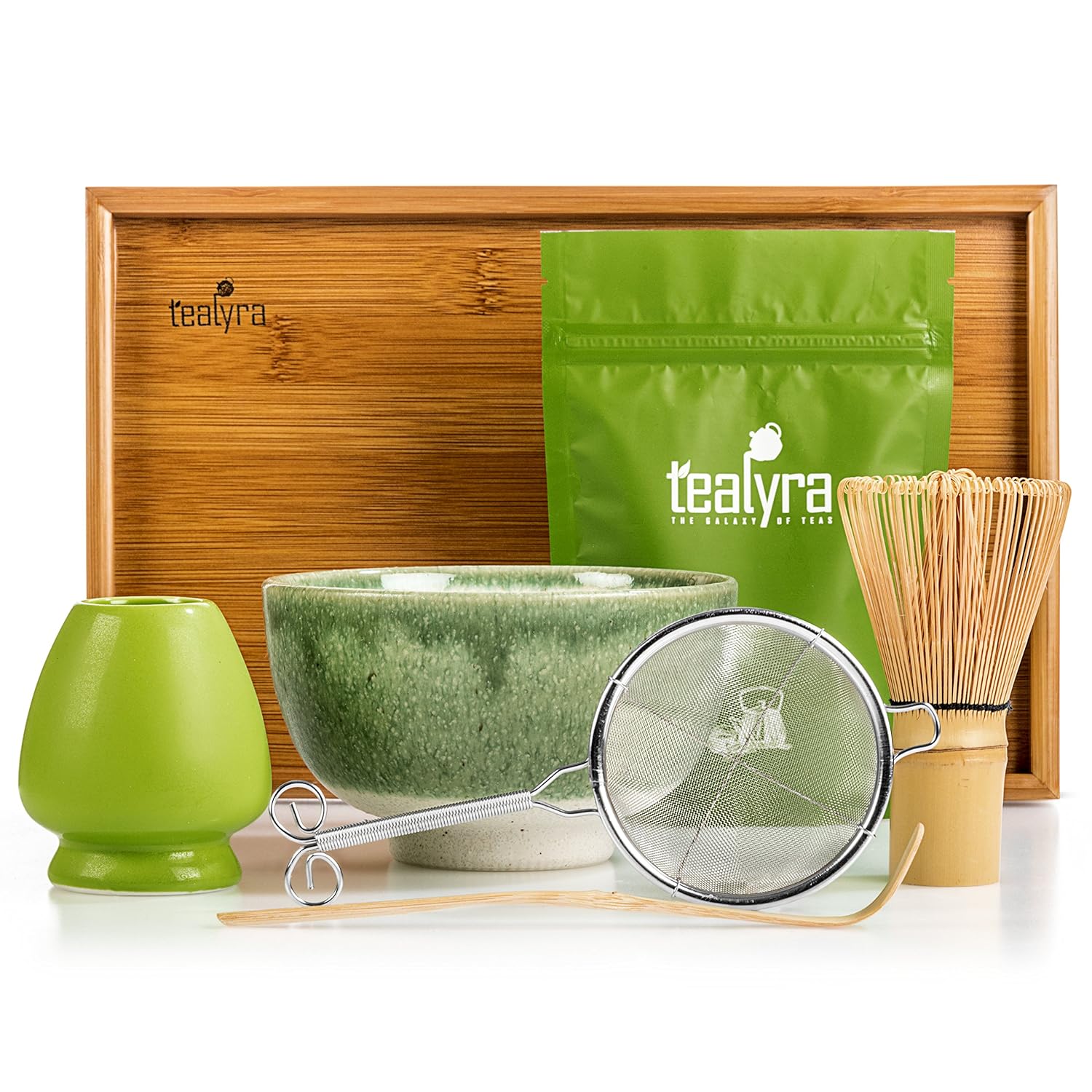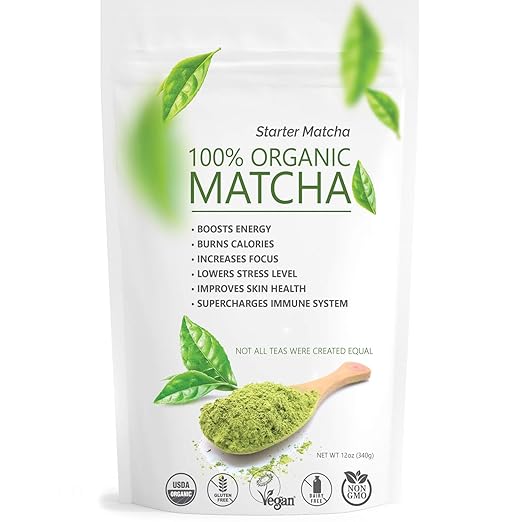If your morning brew is in need of a green upgrade, look no further than the beverage industry’s latest trend: matcha green tea powder. The super healthy, super caffeinated drink has been creeping its way into cafés across the country, but consumers can now enjoy the Japanese export within the comforts of their own home.
Curious about matcha and its amazing healthy properties? We’re here to answer any questions you may have about its history, preparation, and nutritional value.
What is matcha?
Matcha is a powdered green tea. Produced primarily in Japan, the tea bushes’ leaves are deprived of sunlight during the last few weeks of growth, resulting in a vibrant green color that carries increased chlorophyll content.
Where did matcha come from?
Preparation of powdered teas stem from China’s Tang Dynasty (618-907), though matcha was specifically prized by Japan’s Zen monasteries and social elites during the fourteenth to sixteenth centuries.
How is matcha prepared?
Whole tea leaves (after the shaded growth process) are carefully hand-picked and rolled out to dry. Once this is achieved, stems and veins are removed before the remaining leaf is stone-ground into a fine powder. Only half a teaspoon is necessary to brew a cup of matcha. Since matcha powder is stirred directly into water or milk (as opposed to strained through a tea bag), its taste is more potent than traditional teas.

Shutterstock
What are matcha’s health benefits?
Matcha boasts a bevy of proven health benefits. For starters, matcha contains high levels of L-Theanine, an amino acid that balances the tea’s caffeine content. This can help reduce anxiety by inducing calmness without sluggishness. L-Theanine is also healthy for your brain, promoting increased levels of focus and concentration.
Matcha also carries an extremely high antioxidant content. Its polyphenol count (cancer-fighting micronutrients) is said to be 60x that of spinach. Epigallocatechin gallate (EGCG), a specific type of polyphenol, has also been proven to help with weight loss by burning stored fat as energy and inhibiting the formation of new fat cells. Green tea consumption of three to five cups a day is considered optimal for harnessing the full health benefits.
How do I make matcha?
The traditional way to make matcha is to sift the finely ground green tea powder into a stone matcha tea bowl, pour in hot water or milk that’s just under the boiling point (10 ounces of hot liquid for every teaspoon of matcha), and then whisk the mixture until frothy with a small bamboo whisk.
Tealyra Matcha Tea Ceremony Kit, $64.99 on Amazon
Try making ceremonial matcha in the traditional manner when you have more time to meditate.
That said, you don’t need any special equipment; you can also just stir it with a spoon in your mug. If you use milk, it counts as a green tea latte, and if you don’t do dairy, you can use almond milk or another non-dairy milk of your choice. Either way, add a little sugar if you must, though it’s not traditional.
There are other ways to drink matcha, including in green tea cocktails, as an iced green tea in summer, or as a superfood addition to your morning smoothies. But aside from mixing it into liquid, matcha can also be incorporated into a variety of sweet and savory recipes, from ice cream to bread. We’ve rounded up some of our favorite matcha recipes below, but see our Ultimate Guide to Cooking with Matcha for even more info on how to use mighty matcha in your food.
Raspberry Matcha Muffins

Chowhound
If you’re not a fan of sipping from mugs, get your morning pick-me-up from this quick and delicious breakfast confection. Or at least save this bright green recipe for Christmas. Get our Raspberry Matcha Muffins recipe.
Matcha Hong Kong Egg Waffles

Chowhound
You don’t need to be a gourmet chef to make drool-worthy egg waffles in your own kitchen. In fact, all you need is some time, patience, and a little self-confidence (okay, and an egg waffle iron). You can do it! Get our Matcha Hong Kong Egg Waffles recipe.
Matcha Chicken Tenders with Ginger Citrus

Giadzy
Matcha’s versatility extends to crunchy chicken fingers, which makes it nothing less than a superfood to us. This is also a fun way to sneak “greens” into your kids’ diet. Get the Matcha Chicken Tenders with Ginger Citrus recipe.
Matcha Green Tea Popsicles

Feeding Your Beauty
Yes, you’ve just found yourself a new favorite popsicle for summer. Matcha and cream are a match made in hot weather heaven. Get the Matcha Green Tea Popsicles recipe.
Matcha Molten Lava Cakes

Kirbie Cravings
These may look like a dessert out of a Dr. Seuss book, but we promise they’re quite delicious. You may even forget that molten lava cakes taste best with chocolate. Get the Matcha Molten Lava Cakes recipe.
Matcha Banana Bread

Fearless Dining
It may not be green eggs and ham, but we’re sure this matcha banana bread was served as a sweet side to Sam’s famous breakfast. Get the Matcha Banana Bread recipe.
Where can I buy matcha?
Look for high-quality matcha in grocery stores like Whole Foods, at local specialty tea shops, or online.
Jade Leaf Organic Matcha Green Tea Powder, $23.70 on Amazon
This organic matcha tea is ceremonial grade, which means it's ideal for brewing into a bright green cup of goodness.
Matchaccino Organic Matcha Green Tea Powder, 14.99 on Amazon
If you're using matcha in cooking or baking, or blending it into smoothies, you can get by with non-ceremonial grade green tea powder.
All featured products are curated independently by our editors. When you buy something through our retail links, we may receive a commission. For more great hand-picked products, check out the Chowhound Shop.
from Food News – Chowhound https://ift.tt/2rWS5c4
via IFTTT




No comments:
Post a Comment